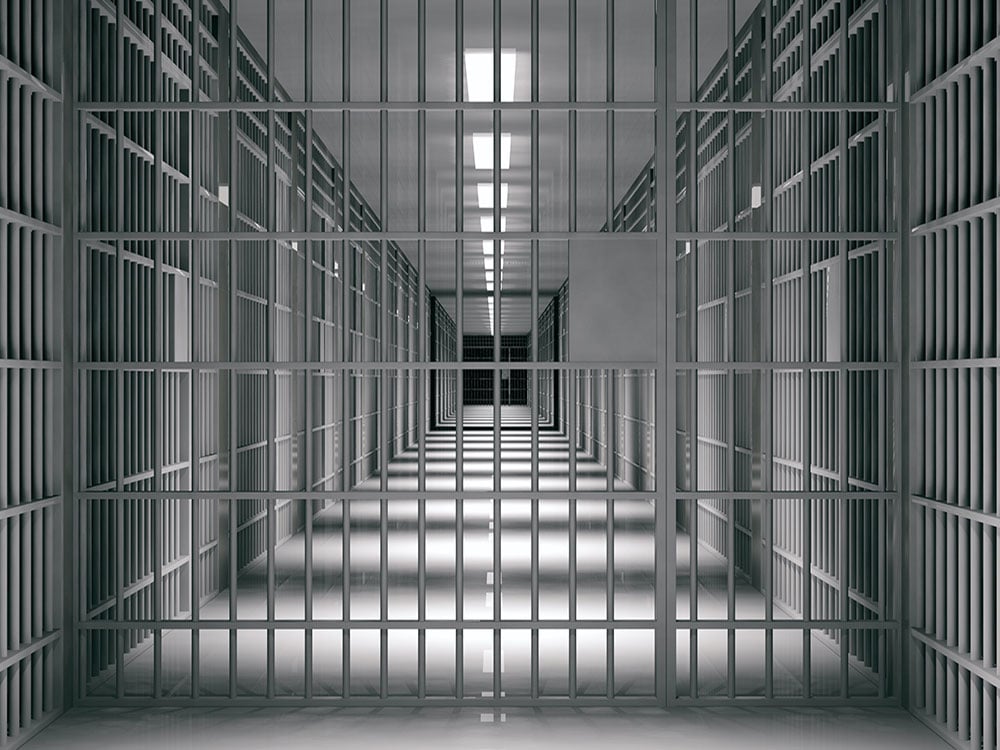When I asked Boyd Peters, a Sts’ailes First Nation member and BC First Nations Justice Council director, about the effects of long-term incarceration on Indigenous people, his brow furrowed. He exhaled and looked down before responding.
“Nobody should have to go through that,” he said.
But more and more Indigenous people are going “through that” — living in Canadian prisons despite federal government commitments “to reset the relationship between Indigenous peoples and the justice system.” From 2009 to 2018, as the general prison population expanded by only one per cent, the Indigenous prisoner population increased by 43 per cent.
A recent report by B.C.’s Prisoners’ Legal Services, “Decarceration Through Self-determination: Ending the Mass Incarceration of Indigenous People in Canada,” suggests a better way to address the overrepresentation of Indigenous people in Canada’s prisons. The report’s proposal seems radical, but it potentially realizes Canada’s Truth and Reconciliation Commission’s goal of reducing the “extreme overrepresentation of Indigenous individuals as incarcerated offenders” while honouring the right to Indigenous self-determination in Section 35 of Canada’s Constitution Act.
Moreover, the report’s proposal largely relies on existing sections of the Corrections and Conditional Release Act, which governs the country’s corrections and parole systems, offering the potential to bring change within the existing legislation.
Prisoners’ Legal Services makes several proposals in their report, including reforming parole hearings so they better respect Indigenous people’s traditions and rights to self-determination, changing regulations on security classifications to properly account for Indigenous people’s traumatic experiences with colonial violence and reforming Section 84 of the act so that “Indigenous communities are reasonably compensated for the costs of providing community supervision” for Indigenous people on parole.
But their central proposal is to divert Indigenous prisoners from federal correctional facilities to Indigenous-operated alternatives to incarceration. To make this change in correctional policy happen in practice, the report argues, the federal government should transfer funds and resources from Correctional Service Canada to Indigenous communities and governments.
“Canada must move resources away from CSC and toward supporting self-determination so that First Nations, Inuit and Métis Peoples can decide what they need to address harm, create safety and heal their nations, communities, families and individuals from colonial genocide, outside of prisons,” the report argues.
Since 32 per cent of federal prisoners are Indigenous, the report notes, the federal government should transfer the equivalent percentage of CSC’s budget to Indigenous communities who would be responsible for Indigenous people who would otherwise be in federal custody. That’s roughly $1 billion of a $3-billion annual budget. “These funds could be used… for a wide range of alternatives to prison, as well as for autonomous, independent Indigenous services for Indigenous people in prison and on conditional release,” explains the report.
The report notes that the Corrections and Conditional Release Act already provides some important mechanisms for this transfer of responsibility and funding. These mechanisms need to be used more effectively and according to their original intentions, it says.
Consider, for example, Section 81 of the act, which authorizes the minister of public safety “or a person authorized by the minister”— in this case, CSC — to “enter into an agreement with an Indigenous governing body or any Indigenous organization” to provide “correctional services” to Indigenous people in custody and for the federal government to pay for those services.
Under the act, the primary “correctional services” provided under Section 81 are healing lodges: Indigenous-centred alternatives to regular custody that emphasize Indigenous traditions and spiritual practices as ways for Indigenous people held in custody to heal from the trauma of their experiences and from the long history of colonial violence. Although some healing lodges are operated by CSC, Section 81 healing lodges are operated by Indigenous groups.
Indigenous-run healing lodges have a proven success rate. They reduce incarcerated and formerly incarcerated Indigenous people’s rates of recidivism and risk. The 2015 Final Report of the Truth and Reconciliation Commission explicitly called on “the federal government to eliminate barriers to the creating of additional Aboriginal healing lodges within the federal correctional system.”
Since the TRC recommendation, there have been repeated calls on CSC to establish Section 81 Indigenous-run healing lodges, including in parliamentary reports, a Union of British Columbia Indian Chiefs resolution, a Standing Senate Committee on Human Rights report and a Canadian Bar Association resolution. But only six Indigenous-run healing lodges have been established under Section 81, and those lodges are woefully underfunded.
In an email to The Tyee, Kevin Antonucci, a CSC spokesperson, wrote that it is “working to maximize and expand on the use of Section 81 agreements.”
“We have worked closely with federal partners, including Indigenous governing bodies and organizations, and with advice from the National Indigenous Advisory Committee, to identify and eliminate barriers in the creation of additional Healing Lodges within the federal correctional system,” Antonucci wrote.
But experts and Indigenous groups tell a different story.
Peters told The Tyee that the Section 81 application process is unnecessarily prohibitive. The Sts’ailes First Nation initially tried to work towards a Section 81 agreement to manage and administer a healing village, he said.
But the bureaucracy made the process “very onerous and too limiting,” Peters said.
The nation eventually partnered with CSC to manage Kwìkwèxwelhp Healing Village, which is a CSC-operated healing lodge. The community still wants a fully Indigenous healing lodge, he said. “It’s just not feasible at this time.”
Peters said the Sts’ailes First Nation “went through the whole process of negotiating” with CSC, but “what they were offering us as a per diem was way less than what it takes to operate the facility.... It wasn’t economically viable.”
In his 2021-22 annual report, the Correctional Investigator noted that, through budget 2017 “CSC received $55.2 million (and $10.9 million ongoing thereafter) to enhance its capacity to provide effective interventions for Indigenous offenders.”
But proportionally “little new funding has been allocated to Indigenous controlled or run community correctional initiatives,” noted the Correctional Investigator, a federal office that provides oversight of the corrections system. The focus of CSC’s Indigenous correctional efforts continues to be mainly prison-based and “signature investments” seem to have gone to “CSC-developed custodial initiatives.”
The discrepancy between Indigenous-run correctional initiatives and CSC programs can be seen when comparing Indigenous-run healing lodges with CSC-operated healing lodges.
According to a 2012 Correctional Investigator’s report called Spirit Matters, “In 2009-10, the allocation of funding to the four CSC-operated Healing Lodges [operating at that time] totalled $21,555,037, while the amount allocated to Section 81 Healing Lodges was just $4,819,479. Chronic under-funding of Section 81 Healing Lodges means that they are unable to provide comparable CSC wages or unionized job security.”
As a result, Indigenous-run healing lodges not only struggle to remain open but, according to Peters, “Indigenous-operated healing lodges can’t pay the staff comparable salaries so it’s really hard to retain any staff.” Often, staff transition to CSC-run institutions where the pay is significantly better.
Moreover, although CSC-run institutions like B.C.’s Kwìkwèxwelhp Healing Village are permanently funded, Indigenous-run healing lodges under Section 81 agreements are only funded for five years at a time, and there is no guarantee that their funding will continue beyond that five-year period. Predictably, such an insecure financial arrangement makes developing and operating a costly and complex system like a healing lodge a risky investment.
It’s worth noting that some Indigenous communities are wary of being involved with corrections, for a variety of reasons. David Milward, associate professor of law at the University of Victoria, told The Tyee that it’s important to ensure that a community “has the capacity” to manage the services on their own.
Milward said he wasn’t making a judgement about the fitness of any community, but instead underscoring how some communities “have been so severely damaged” that they would need outside assistance to implement what are costly and complicated correctional systems.
It’s also important, cautioned Milward, “not to transplant the same idealistic assumptions onto every Indigenous community.”
Milward offered a scenario where an Indigenous person was incarcerated for selling alcohol or drugs in an Indigenous community that was struggling with addiction. Although the incarcerated Indigenous person may have experienced their own colonial trauma, and that trauma may play a causal role in their criminality, they might nonetheless constitute a threat to the Indigenous community’s safety and stability. Correctional initiatives that are developed by Indigenous communities need to manage such complex tensions resulting from centuries of colonial violence that are not easily resolved.
Benjamin Ralston, assistant professor at the University of Saskatchewan’s college of law, told The Tyee that healing lodges can certainly be effective, but Section 81 can also mean a wide variety of Indigenous alternatives to incarceration, like non-facility models, that might be “better tuned” to some communities’ circumstance.
“Ultimately, it’s going to come down to: What initiatives are being put forward [by Indigenous groups], and where would Indigenous nations like to see that money being allocated?”
The central proposal of the Prisoners’ Legal Services report, while bold and certainly politically challenging to adopt, is nevertheless promising since its recommended “nation-to-nation” arrangement between Indigenous nations and the federal government would mean that individual Indigenous communities could decide how correctional initiatives were funded and CSC would no longer act as a middleman holding the purse strings, blocking decision-making and functioning as the ultimate arbiter for Indigenous people in custody.
“When we look at [how] our people dealt with people that were in conflict with the way that we do things normally in our communities,” said Peters, “we had ways of dealing with it. We would correct the person. ‘Correctional’ Services: the way they do it is totally foreign to our people. We treat people with love and respect and dignity. We give them opportunities.” ![]()
Read more: Indigenous, Rights + Justice

















Tyee Commenting Guidelines
Comments that violate guidelines risk being deleted, and violations may result in a temporary or permanent user ban. Maintain the spirit of good conversation to stay in the discussion and be patient with moderators. Comments are reviewed regularly but not in real time.
Do:
Do not: